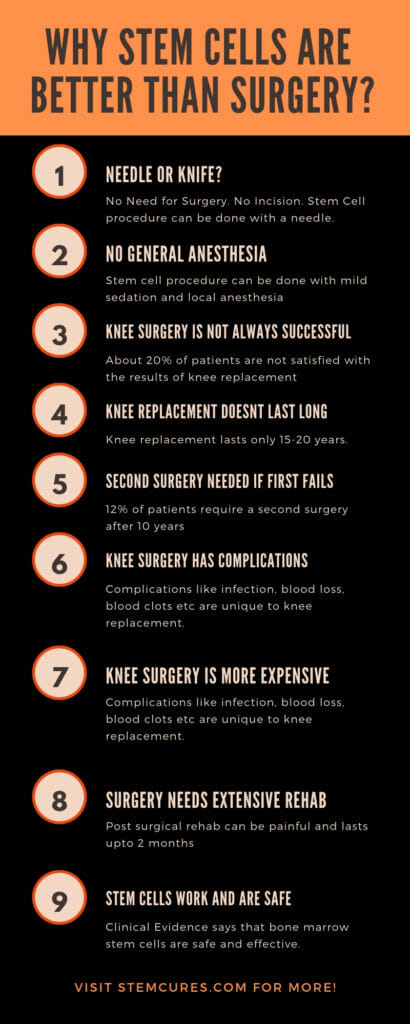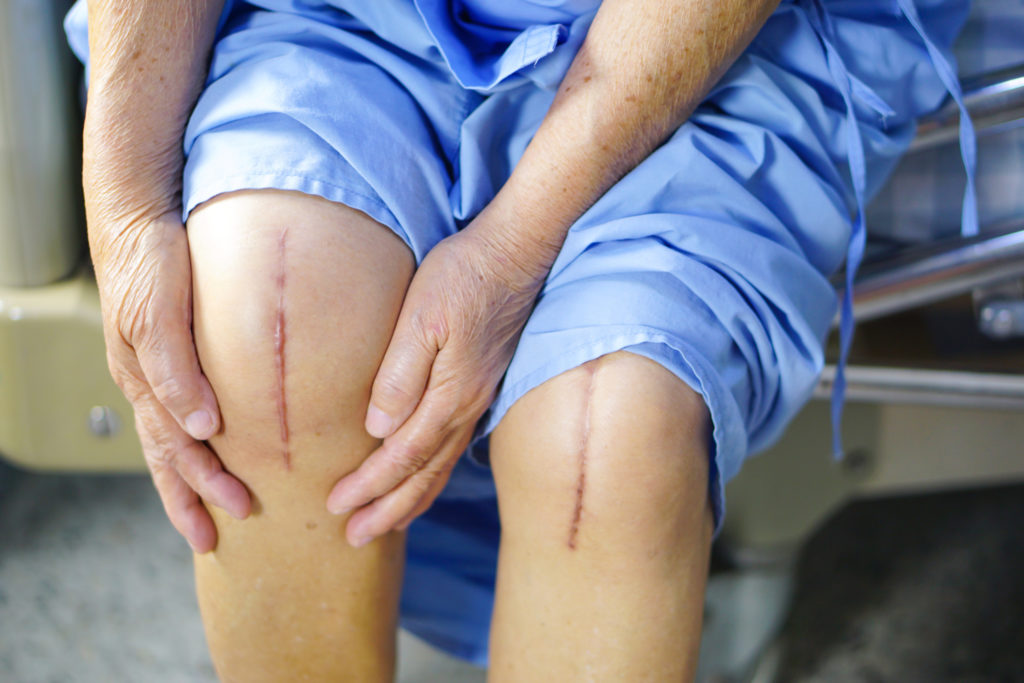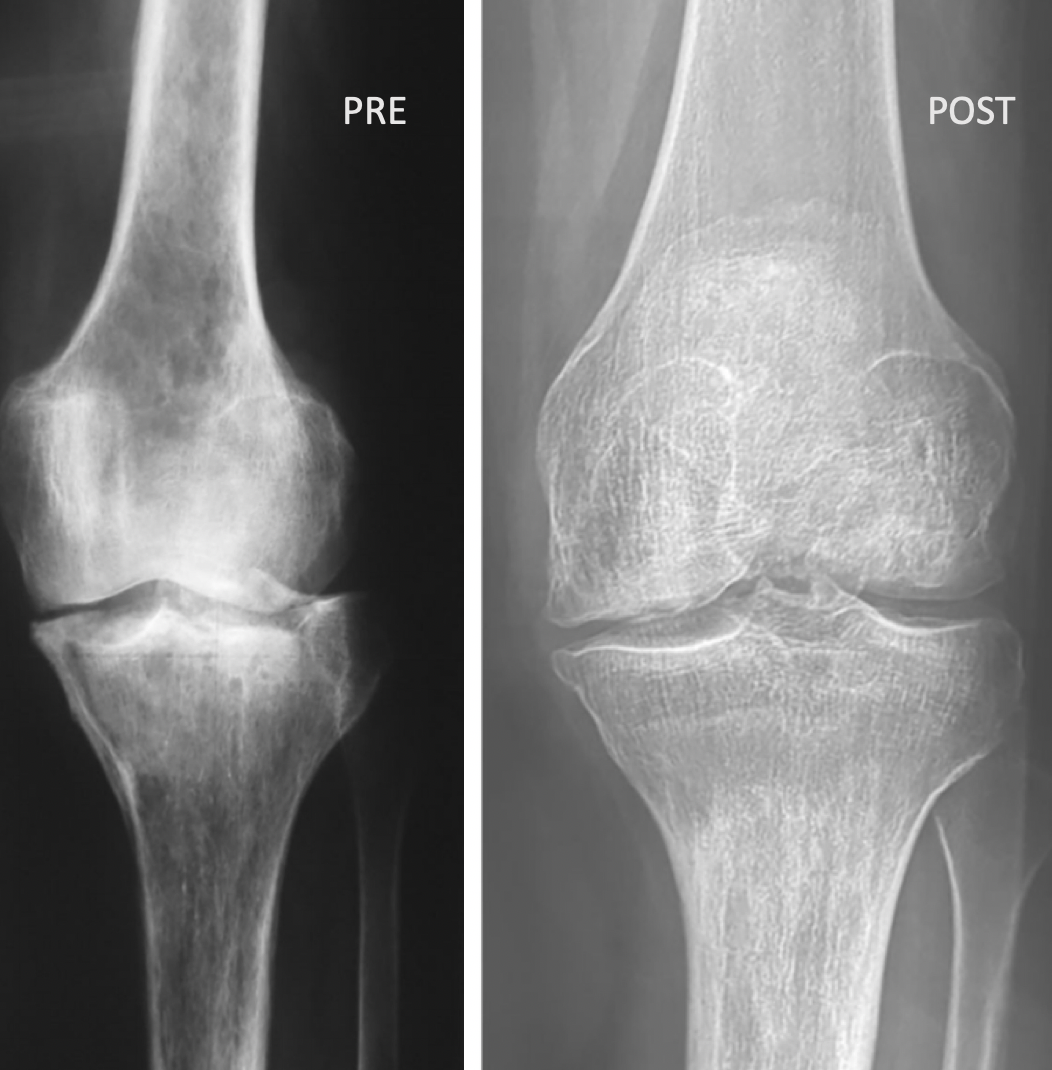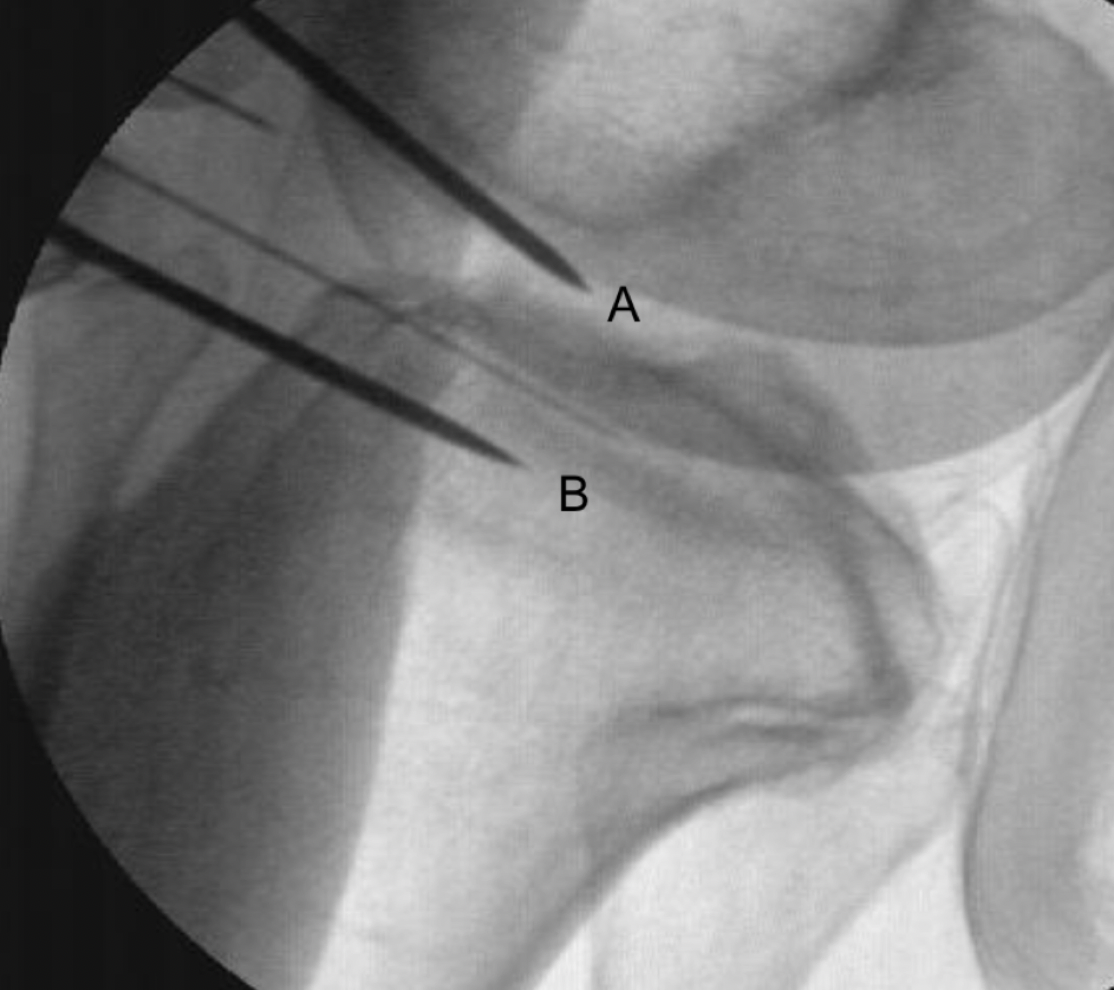Stem Cell Therapy for Chronic Spine & Joint Pain

Why Stem Cell Therapy is the Better Cost Option
Stem cell therapy is often considered a better cost option for treating chronic spine and joint pain compared to surgery for several reasons:
1. Lower Direct Costs
- Minimally Invasive: Stem cell therapy is a non-surgical, minimally invasive procedure, which often costs significantly less than traditional surgeries.
- Outpatient Procedure: Stem cell therapy typically doesn’t require hospital stays, reducing costs associated with hospital fees, anesthesia, and extended recovery care.
2. Reduced Recovery Time
- Faster Recovery: Recovery after stem cell therapy is generally quicker, leading to less time off work and fewer follow-up visits. In contrast, surgery often requires a lengthy rehabilitation process, which can increase both direct medical costs and indirect costs, such as lost wages.
3. Lower Risk of Complications
- Fewer Complications: Surgery comes with risks such as infections, blood clots, and complications from anesthesia, which can lead to additional treatments or hospitalizations. Stem cell therapy typically has fewer risks, reducing the likelihood of expensive post-procedure care.
4. Potential to Avoid Future Surgeries
- Regenerative Approach: Stem cells aim to regenerate and repair damaged tissues, potentially delaying or preventing the need for future surgeries. This can save long-term costs by addressing the underlying issue rather than just managing symptoms temporarily, as some surgeries might.
5. Customizable and Targeted Treatment
- Personalized Medicine: Stem cell therapy can be tailored to the individual patient’s condition, which may enhance effectiveness and reduce the need for additional treatments. Surgery often involves a more generalized approach, which may require revisions or further procedures over time.
6. Avoidance of Rehabilitation and Physical Therapy Costs
- Less Post-Treatment Therapy: Surgery often necessitates months of physical therapy, adding to the overall expense. In contrast, stem cell therapy usually requires less rehabilitation, further lowering costs.
Book an appointment with Dr. Alturi with 20+ years of experience in Stem Cell Therapy
Stem Cell Knee Injection Testimonial
Book an appointment with stem cell expert
Does the procedure have to be repeated?
No. It is a one time procedure. In our experience, most patients do well as we have a special technique to maximise the number of stem cells extracted. Additionally, multiple pain generators are targeted precisely with stem cells.
What are the risks involved with stem cell therapy for knee pain?
This is a safe procedure. No complications were reported in the studies so far. Some patients have increased pain for 2-3 days after the procedure. Occasionally, this pain may last for 1-2 weeks. We treat this post procedure pain aggressively with painkillers. After the first week, patients start noticing pain relief. It takes about 2 months to get the full benefit from stem cell therapy
Is stem cell therapy for knee pain, the right treatment for you?
If the pain is severe enough that is affecting your lifestyle and if you have failed conservative therapies like medications, physical therapy, etc, you should consider stem cell therapy. If the pain is tolerable or minimal, you are not a candidate. Stem cells “sense” inflammation and get activated. If there is no pain, they will not get activated.
If you are having Chronic pain [pain for more than 6 months] consider stem cell therapy. If pain is less than 6 months, it is preferable to wait and see as pain may get better on its own.
Why are bone marrow stem cells the best?
Firstly, they are the only stem cells that seem to be allowed by the FDA. Fat stem cells like SVF are clearly not allowed. In fact the FDA has shut down 2 stem cell franchises from using SVF. Umbilical cord and Amniotic tissue stem cells are also not allowed by the FDA. Many independent studies have shown that umbilical and amniotic tissue vials that are available commercially do not contain any stem cells. These tissues contain very few stem cells. It is not surprising that these few stem cells don’t survive the collection, storage, processing, freezing and shock thawing process. They only have growth factors. They should be called growth factor therapy and not stem cell therapy.
Secondly, bone marrow stem cells have been used for 30 years and their safety has been established. Umbilical cord stem cells have caused infections in many patients requiring long term hospitalization. Fat stem cells have caused blindness. This is from the enzymes used to process the fat stem cells.
Thirdly, most of the clinical trials regarding the efficacy of stem cells to relieve pain have been done with bone marrow stem cells.
Lastly, since are coming from the patient, there is no risk of allergic reactions or infections.
What do our patients say about stem cell therapy for knee pain?
Kris had severe knee arthritis [bone on bone] and was suffering from knee pain for many years. She underwent stem cell therapy on her left knee. She was extremely pleased with the results and had the same therapy on the right knee. Now her pain is significantly better and is able to be more functional
See what our other patients say about this procedure by clicking the button below




